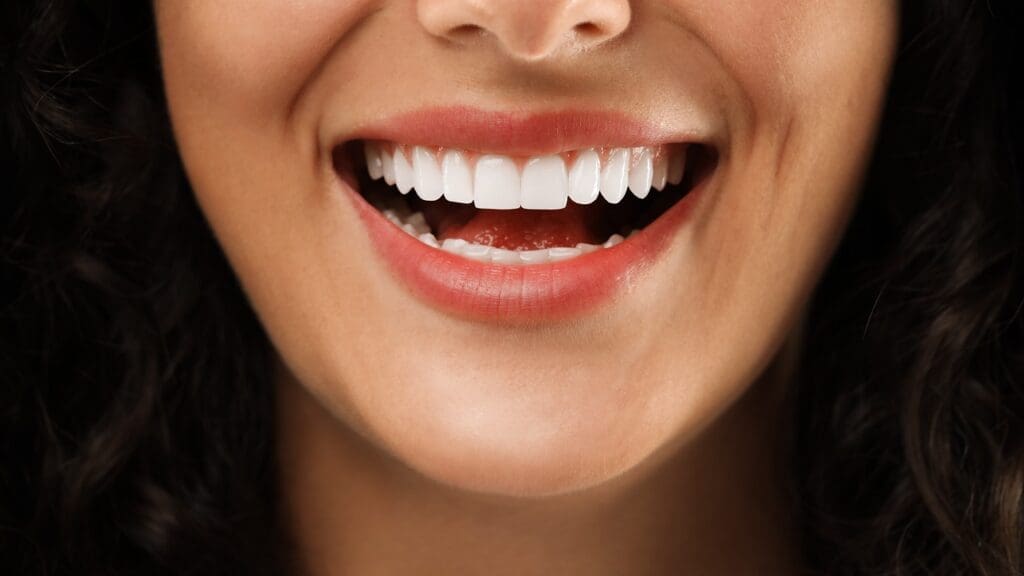Teeth Whitening: Process, Benefits, and Treatment Options
Teeth Whitening Process improves the brightness of your smile and enhances your overall appearance. As more people seek a radiant, white smile, professional teeth whitening process methods have become popular, including at-home and in-office treatments. Modern technology like laser whitening provides faster, effective results.

What is Teeth Whitening?
This disorder refers to a variety of dental aesthetic procedures designed to lighten the color of teeth by several shades. When performed by dentists, these methods can help teeth appear brighter for anywhere from a few months to up to three years. Tooth discoloration or yellowing can result from factors such as heavy antibiotic use, frequent coffee and tea consumption, smoking, or varying levels of fluoride in drinking water. Whitening treatments can significantly reduce the appearance of these stains and discolorations, helping restore a more radiant smile.
Information About Whitening
The disease is an aesthetic procedure suitable for any adult without existing dental or gum diseases. Before treatment, a dental examination is performed to assess oral health and discuss the patient's goals. If the dentist approves, a personalized treatment plan is created. Generally, teeth whitening methods are divided into two primary categories: in-office whitening and at-home whitening.
In-office teeth whitening
Home whitening
After teeth whitening procedures, people can have more white and shiny teeth.
How is the Process Performed?
During this procedure, a whitening gel is applied to the surface of the teeth. This gel is then activated using a specialized light or laser, which accelerates the whitening process. The entire treatment typically takes about an hour, and most patients experience no discomfort. Whitening should be performed in professional dental clinics to ensure safety and optimal results.
Is There Any Harm in Teeth Whitening?
The disease is safe and does not harm your teeth when the correct products are used and the procedure is performed by a qualified dentist. To protect gum health and achieve the best results, it is essential that all whitening treatments are administered under professional supervision.
What to Pay Attention to After Teeth Whitening?
For 48 hours after teeth whitening, avoid consuming acidic or strongly pigmented foods and drinks. Instead, choose light-colored options to help preserve your results. During this period, steer clear of items like wine, coffee, tea, sugary foods, cocoa, lemon, cherry, pomegranate, and raspberry.
How Permanent Is Teeth Whitening?
The longevity of teeth whitening results depends on your diet, oral hygiene, and any medications you may be taking. Habits such as smoking or frequent coffee consumption can significantly shorten the effects of whitening. Likewise, neglecting regular brushing and dental care will reduce treatment longevity. For some people, results may fade in as little as one year, while others can maintain a brighter smile for up to three years.
What is Laser Teeth Whitening?
Laser teeth whitening is a dental procedure performed by a dentist, where a special whitening gel is applied to the teeth and then activated by high-intensity laser beams. The laser enhances the effectiveness of the gel, helping to break down and remove stain molecules from the tooth surface for a noticeably brighter smile.
How is Laser Teeth Whitening Performed?
Laser teeth whitening is conducted in a dental clinic after a dentist confirms you are suitable for treatment. During the procedure, a rubber support is placed in your mouth and you wear protective glasses to shield your eyes from the laser. A protective barrier is applied to your gums before a whitening gel is spread over the front surfaces of your teeth. The dentist then directs a laser beam at the teeth for several minutes, activating the bleaching gel through heat. After the process is complete, the mouth support and gum barrier are removed.
What is in-office bleaching?
In-office teeth whitening is a popular choice due to its speed and long-lasting results. The procedure uses gels with a high concentration of hydrogen peroxide to effectively whiten teeth. This method is also suitable for patients with gum recession. In addition to bleaching gels, light or laser treatments may be used to accelerate the whitening process and enhance results.
What Should Be Taken into Account When Having In-Office Whitening?
In-office teeth whitening must be performed by a qualified dentist. It's important to choose a clinic that uses high-quality materials to ensure both safety and effectiveness. Using substandard products or improper techniques can lead to gum damage or unsatisfactory results.
How Many Sessions Does In-Office Teeth Whitening Take?
In most cases, in-office teeth whitening is completed in two sessions. However, the exact number of treatments may vary based on each patient's dental health and the condition of their teeth.
What is Home Teeth Whitening?
Home teeth whitening allows individuals to whiten their teeth on their own using specially designed kits purchased with a dentist's guidance. This process should always be carried out under dental supervision. Your dentist will recommend custom trays or devices that fit over your teeth, which are filled with whitening gel. Typically, these trays are worn for 30 minutes to an hour, according to your dentist's instructions. One benefit of home whitening is fewer required visits to the dental clinic.
What are the Methods of Home Teeth Whitening?
Whitening toothpaste and whitening strips are popular options for at-home teeth whitening. Whitening toothpaste requires consistent, long-term use and typically provides more gradual results. Whitening strips contain a low concentration of hydrogen peroxide and can be used once or twice a day to help brighten teeth. While both methods are convenient, they are generally less effective than professional in-office whitening treatments.
What is Combined Teeth Whitening (Home and In-Office whitening)?
Combined this disorder uses both in-office and at-home treatments for optimal results. After a professional whitening session at the clinic, you continue the process at home using custom-made dental trays filled with whitening gel. The gel should be distributed evenly in the trays, which are typically worn overnight or as directed by your dentist. This approach aims to enhance both the effectiveness and longevity of whitening results.
What is single tooth whitening (internal bleaching)?
Internal whitening targets discoloration inside a tooth, often used to eliminate yellowing that occurs after root canal treatment. This procedure is intended for damaged teeth or cases where external whitening does not produce the desired result.
During internal whitening, the dentist removes the existing filling, applies a whitening gel inside the tooth, and then reseals it with a new filling. The process may be repeated if necessary for better results.
Tooth Whitening Prices
The cost of teeth whitening varies depending on the chosen method and any necessary preliminary dental treatments. Before whitening, patients should have healthy gums and no cavities, and any existing dental issues should be addressed first. For accurate pricing, consult a dentist for a thorough examination and personalized treatment plan.
* Liv Hospital Editorial Board has contributed to the publication of this content .
* Contents of this page is for informational purposes only. Please consult your doctor for diagnosis and treatment. The content of this page does not include information on medicinal health care at Liv Hospital .
For more information about our academic and training initiatives, visit Liv Hospital Academy
Frequently Asked Questions
What is teeth whitening?
Teeth whitening is a cosmetic dental procedure that lightens the color of teeth by removing stains and discoloration. It can be performed professionally at a dental clinic or at home under a dentist’s supervision.
How is the teeth whitening process performed?
A whitening gel is applied to the tooth surface and activated with a special light or laser to enhance its effect. The procedure usually lasts about an hour and should always be done by a qualified dentist.
Is teeth whitening safe?
Yes, teeth whitening is safe when carried out by professionals using approved materials. When done correctly, it does not harm the enamel or gums.
What should I avoid after teeth whitening?
For at least 48 hours after treatment, it is best to avoid acidic, colored, or staining foods and drinks such as coffee, tea, wine, and cocoa. Lighter-colored foods help preserve the whitening results.
How long do teeth whitening results last?
Results may last from one to three years, depending on factors like diet, smoking habits, and oral hygiene. Proper dental care can extend the effects of the procedure.
What is laser teeth whitening?
Laser teeth whitening involves applying a special gel to the teeth and activating it with a high-intensity laser to break down stains and achieve a noticeably brighter appearance in a single session.
Why choose Liv Hospital for teeth whitening?
Liv Hospital provides modern whitening technologies, experienced dental specialists, and safe, customized treatments that deliver lasting, natural-looking results for every patient.


